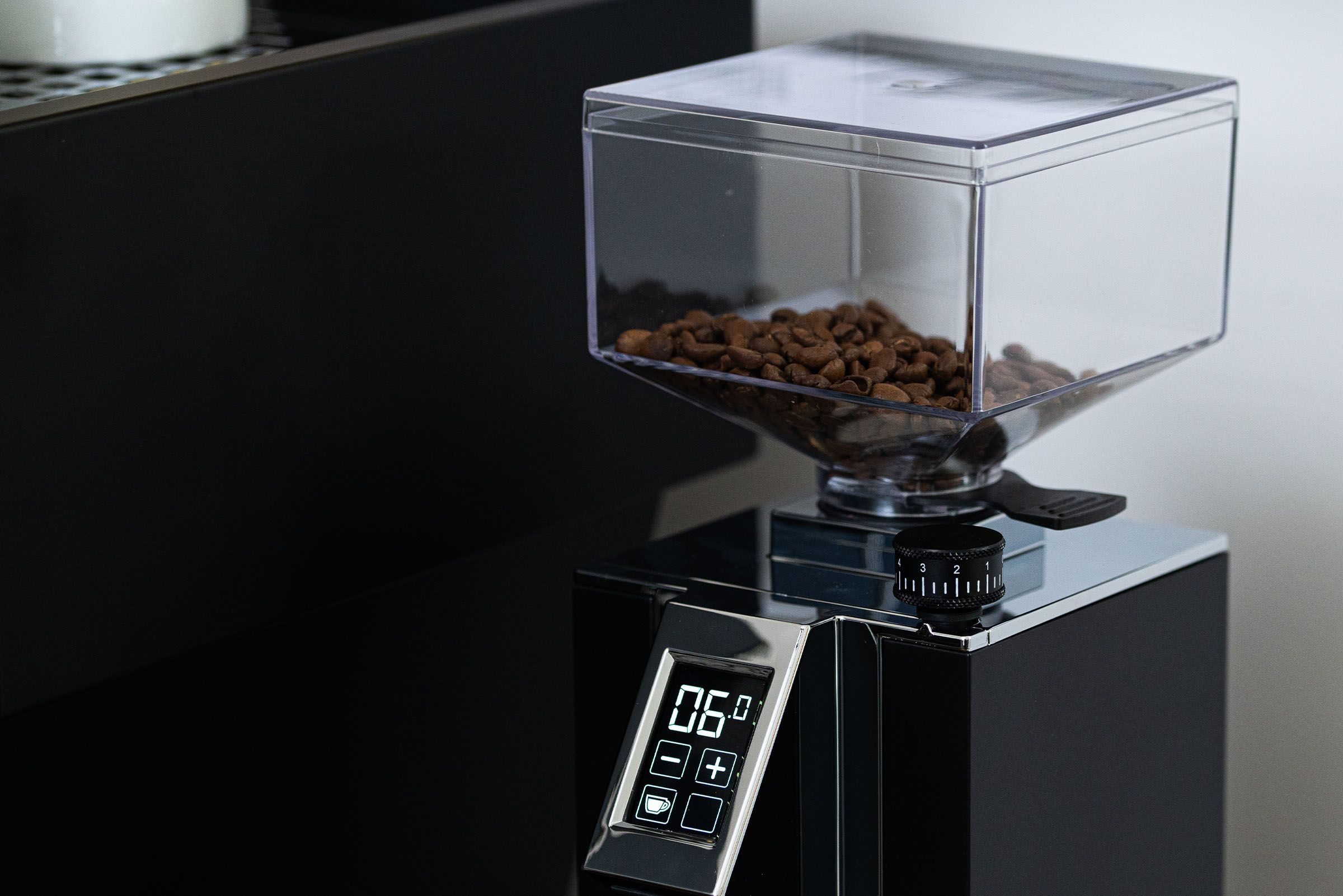
Espresso Grinder Guide
Lee Brooks“I don’t need a grinder, I’ll just use pre-ground coffee”
Do you always cook with pre-prepared and stale food?
We regularly talk at great length to customers about their choice of prosumer espresso machine but grinder advice is a shorter conversation for a couple of reasons. Primarily because there is less to decide on, being relatively simple products, but also because many customers view them as a less important part of the setup or even perceive them as not being required at all. The temptation to cut costs and purchase pre-ground coffee is strong!
Would you run your lovely new car on chip fat?
Or don’t want to use your lovely, and costly, new machine it to its full capability?
Let’s talk grinders...
Choosing the right grinder
So, we’ve established that you really need to invest in a grinder and that choosing the correct model for your home coffee set up is just as, if not more, important than choosing the right coffee machine.
You can invest £500 or £5000 on your brand new espresso machine which will pull shots at a controlled temperature and pressure and are all built with high quality parts. But if the grinder sat alongside your new machine is not suitable then you will struggle to produce a decent espresso.
When customers call for advice on their new coffee set up, we emphasise how important it is to dedicate a large percentage of the budget to the grinder. This may be larger than anticipated and could even reduce the budget for the machine itself.
Let’s now look at the different types of grinders and which best suits your needs.
What coffee are you making?
Espresso based coffee demands fine, uniform particles. When put under high water pressure, coffee oils will extract from those particles at a steady, consistent rate, flowing into the cup over around 30 seconds. The more you spend on a dedicated espresso grinder, the higher the quality espresso extraction you should expect. Generally speaking, larger burrs will deliver a dose containing a greater percentage of the particle size required for a high quality espresso than smaller burrs.
Filter or ‘pour over’ brewing is a much gentler process, drawing those oils out over minutes rather than seconds and places the coffee particles under less pressure than the espresso extraction. Whilst this means that the particles used are required to be coarser (to offer a larger surface area), and that uniformity of size is still a requirement, there isn’t so much of a requirement to spend large amounts of money chasing the ‘god-shot’ espresso. Grinding quality beans with simple worktop burr grinder or hand grinder can result in an amazing tasting drink for the fraction of the cost of espresso production.
Single dose or traditional hopper grinder?
Another factor to consider when deciding on the grinder is whether to purchase a single doser. Single dosing is the new buzz phrase in the domestic coffee world, but is the right way for you to go? The reason many people believe it’s the preferred option is because of very low retention rates. Retention is the amount of coffee ground down but not delivered into the portafilter basket. This can lead to stale grinds being used and thus a poor tasting espresso. Purging prior to dosing will alleviate this issue but the ideal is to purchase a grinder which minimizes the amount of ground coffee retained within the burrs.
The main benefits of a single doser are:
- only grind what’s needed and use an Airscape to store beans, keeping them fresher for longer
- grind alternative varieties of beans or routinely switching from caffeinated to decaf
- efficient, accurate and consistent dosing
- lower retention rates compared to traditional grinders
Why would a traditional hopper grinder work better for you?
- time saving….fill your hopper up and rely on the grinder’s timer to dose the required amount
- not having to weigh beans out for each espresso
- efficient, accurate and consistent dosing
- ideal for producing multiple espressos in a short space of time (there’s a reason why cafes don’t use single dosing grinders!)

